The Great Flood
Asheville, Sacramento 1861 Human-made disasters
The Great Flood of 1861-1862

My hometown of Sacramento was functionally annihilated in the Winter of 1861, while the rest of the country was at war. Indeed, the flooding that started in November of 1861 and ended in February of 1862 functionally destroyed what is today Washington State, Oregon, California and accounted for the highest rainfall totals in known history in Idaho, Nevada and Arizona. The flooding was particularly devastating to Sacramento, however. Why? Human greed, stupidity and alteration of the land.
By 1861, the stereotypical 49er with the big hat and the gold pan had been more or less extinct for well over a decade. Replacing the intrepid, if not foolish, gold seekers were industrial commercialized mining efforts. Deploying a technology called hydraulic mining, corporations blasted the foothills and mountains of the Sierra Nevada Mountain range, looking for every ounce of gold that they could find. The result, other than a pile of gold hoarded mostly by wealthy white men, was a mountain range whose natural valleys, ravines, and gullies that collected and channeled water, slowing its passage into the Sacramento Valley, were effectively gone when it started raining in November of 1861. When the rain kept coming the floods kept rising.
What's more, eager to alter the path of the Sacramento River, Sacramentans moved the river's path and changed the levee structure that protected the young city's growing core. As water rushed out of the mountains into the valley, it moved not over the levees but around them and into the city. After a month of nonstop rainfall, the people of Sacramento breached their own levee to let the water OUT of the city into the river, which was actually lower than the water level inside the levee.
Human greed and stupidity took a naturally occurring event--an atmospheric river much like the one that hit Sacramento last year--and turned it into an outright disaster. Sacramentans spent the next decade raising or razing every building in the city--dozens, if not hundreds of buildings, were literally raised by ten or more feet, creating today's underground city of Sacramento. The Sacramento Valley was entirely submerged by water, creating a fifty-mile-wide, three-hundred-mile-long, twenty-foot-deep lake. California was initially cut off from the rest of the country because all of the newly lined telegraph lines were underwater. An economy largely based on livestock was annihilated as more than half the herd drowned.
And in a pattern any Central Californian would recognize it didn't rain again for two years.
Could the flooding of the year been prevented? Absolutely not. Did human greed and judgment make it worse? Undoubtedly.
Hurricane Helene 2024
Like periodic atmospheric river floods in California, hurricanes can and do hit Western North Carolina. That's long been the case. On the other hand, Hurricane Helene in late September of this year was punched up by historically high weather temperatures in the Gulf of Mexico, increasing the chances of a hurricane, especially one later in hurricane season, forming and being so deadly. Did humans cause Hurricane Helene's destructiveness? The answer is complicated but likely a qualified yes. Hurricanes have hit Western North Carolina even later in the year.

In October 1837, "Racer's Hurricane" ravaged Mexico, cutting across Texas and the entire Gulf Coast of the United States into North Carolina. So, late-season hurricanes do happen in North Carolina. However, the effects of human-made climate change made Helene more likely to form and likely more devastating.
As a born and raised Sacramentan, living in Florida, with family in Western North Carolina, this is all connected for me. I visited Asheville, North Carolina at Thanksgiving this past year and was able to survey the damage of a hurricane several months in the past. It was devastating. Everything near the river was destroyed--this included a number of local businesses. Asheville is built into the valleys and ravines of the Blue Ridge Mountains at the confluence of the Swannanoa River and the French Broad River, so higher elevation businesses and properties were reasonably safe. Still, as I think about North Carolina's mountains, whose residents in 1861 assumed the Civil War would be over by Christmas and probably didn't care what was happening in California, I can't help but think of the largely forgotten flood that annihilated Sacramento.
There's a connection there: the stupidity of humans disassociated from reality, choosing to rely on their feelings instead of facts, scientific methodology, and reason. Californians in 1861 "felt safe," fundamentally altering the landscape around, but they were far from it. North Carolinians figured hurricanes were a fact of life and they'd survived others when Helene was a human-made monster.
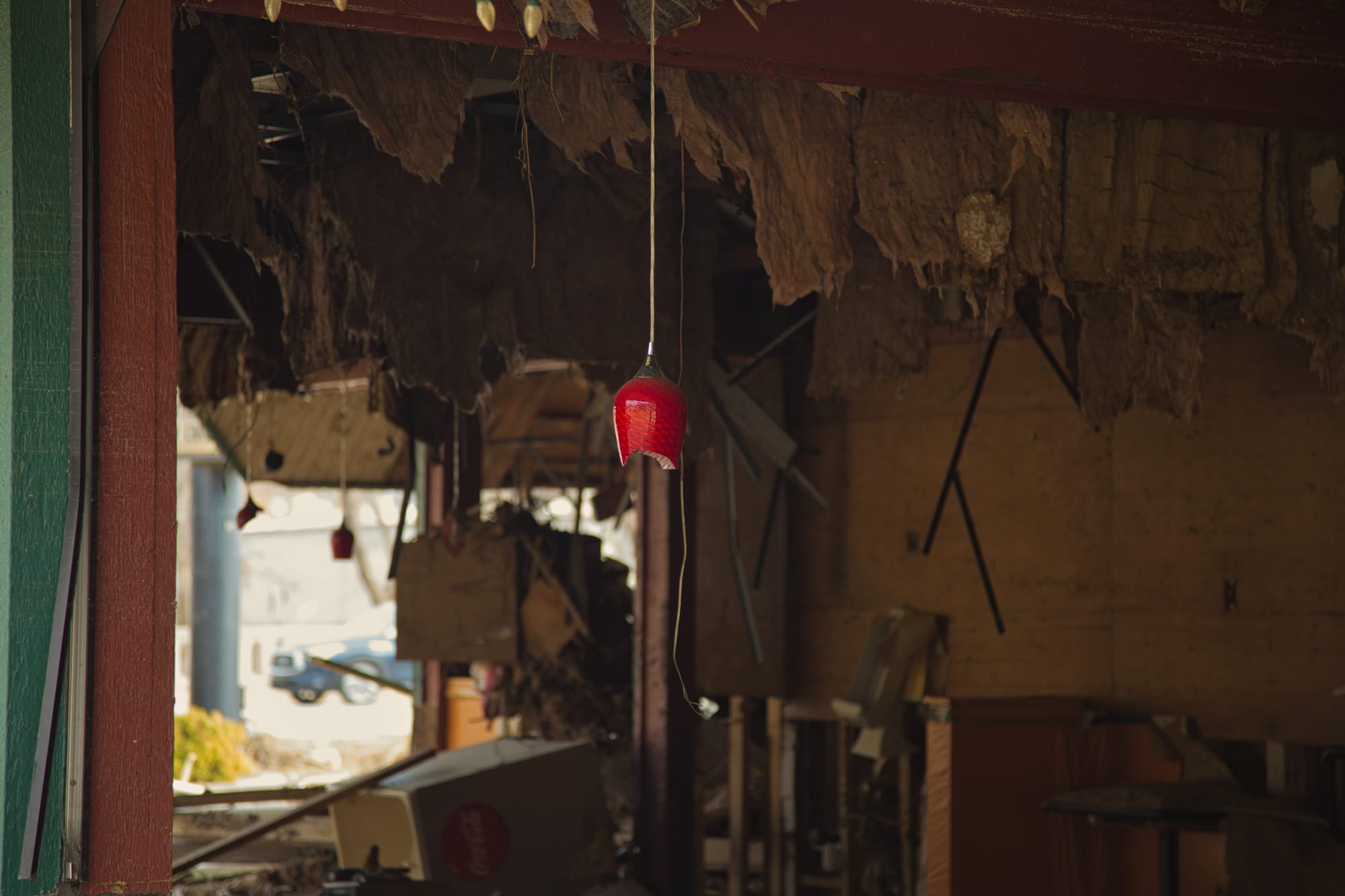
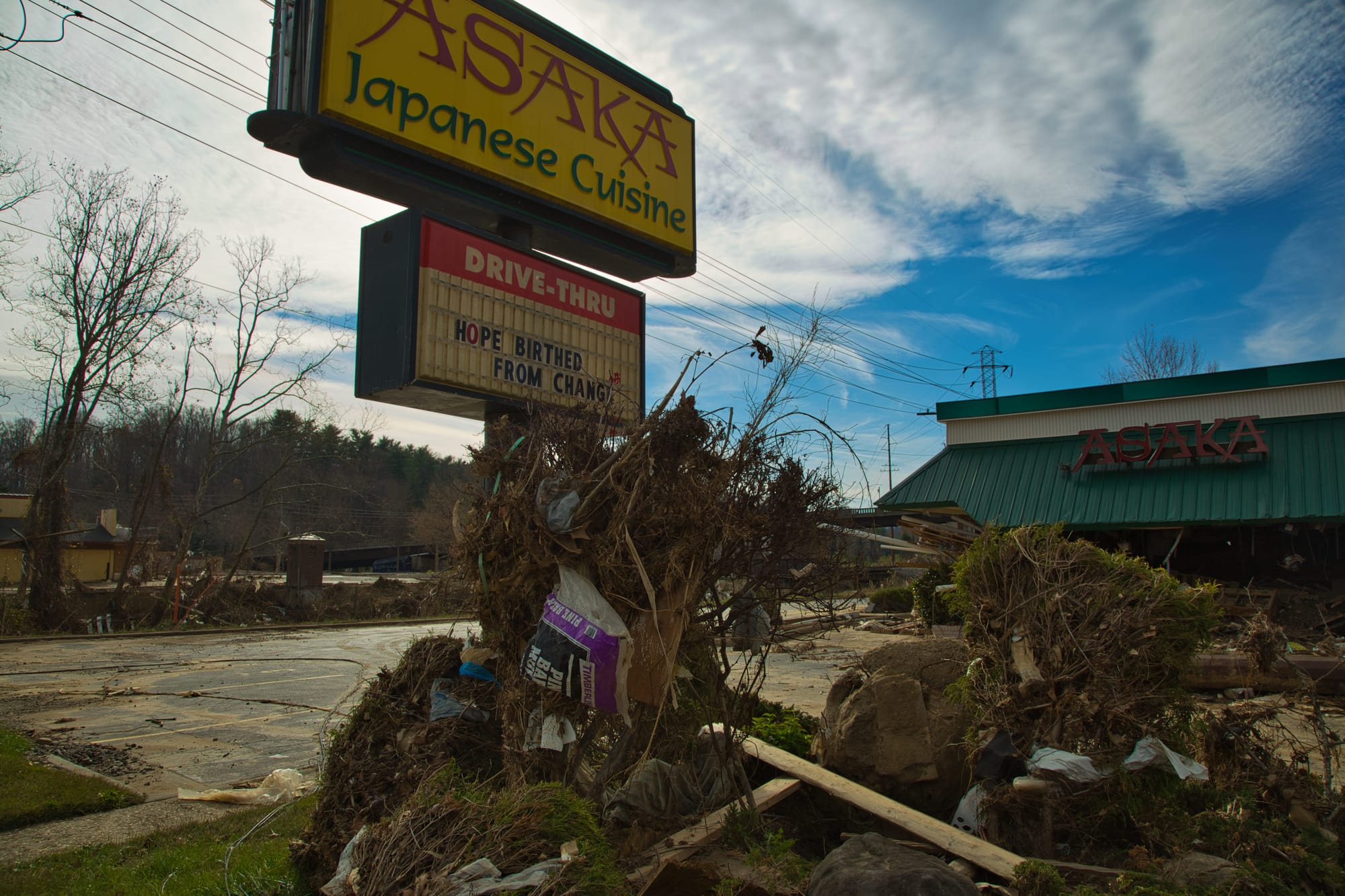
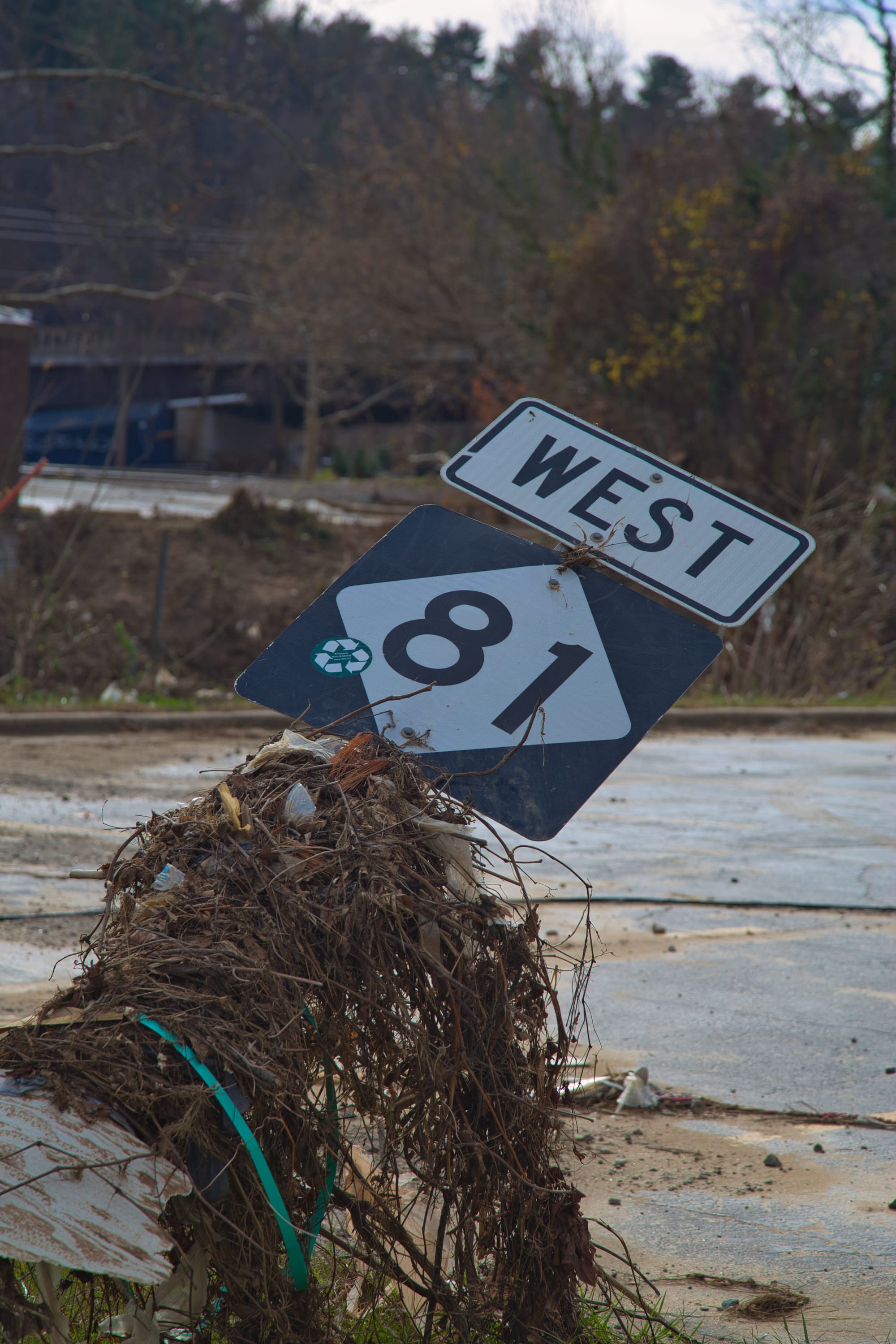
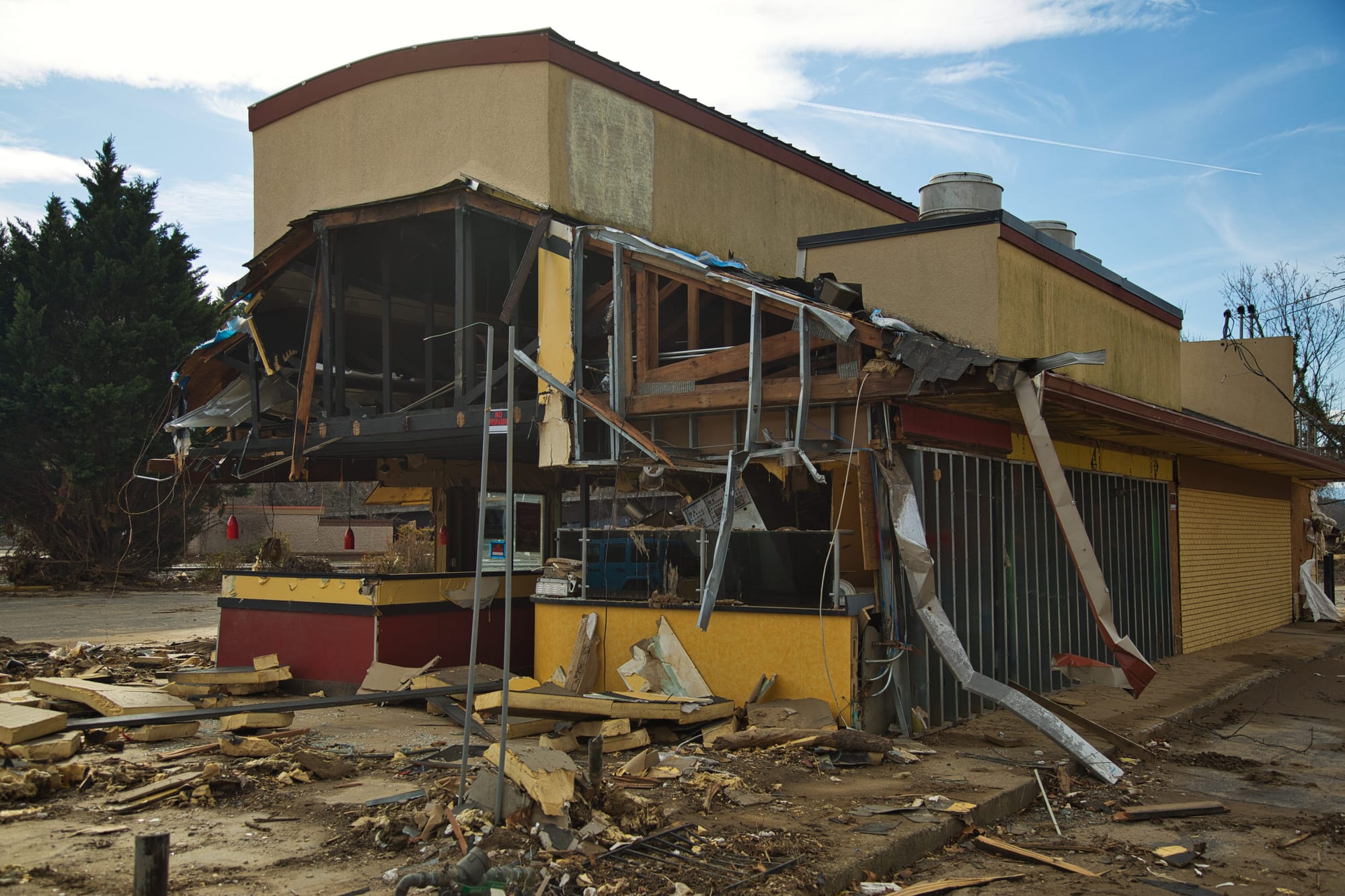
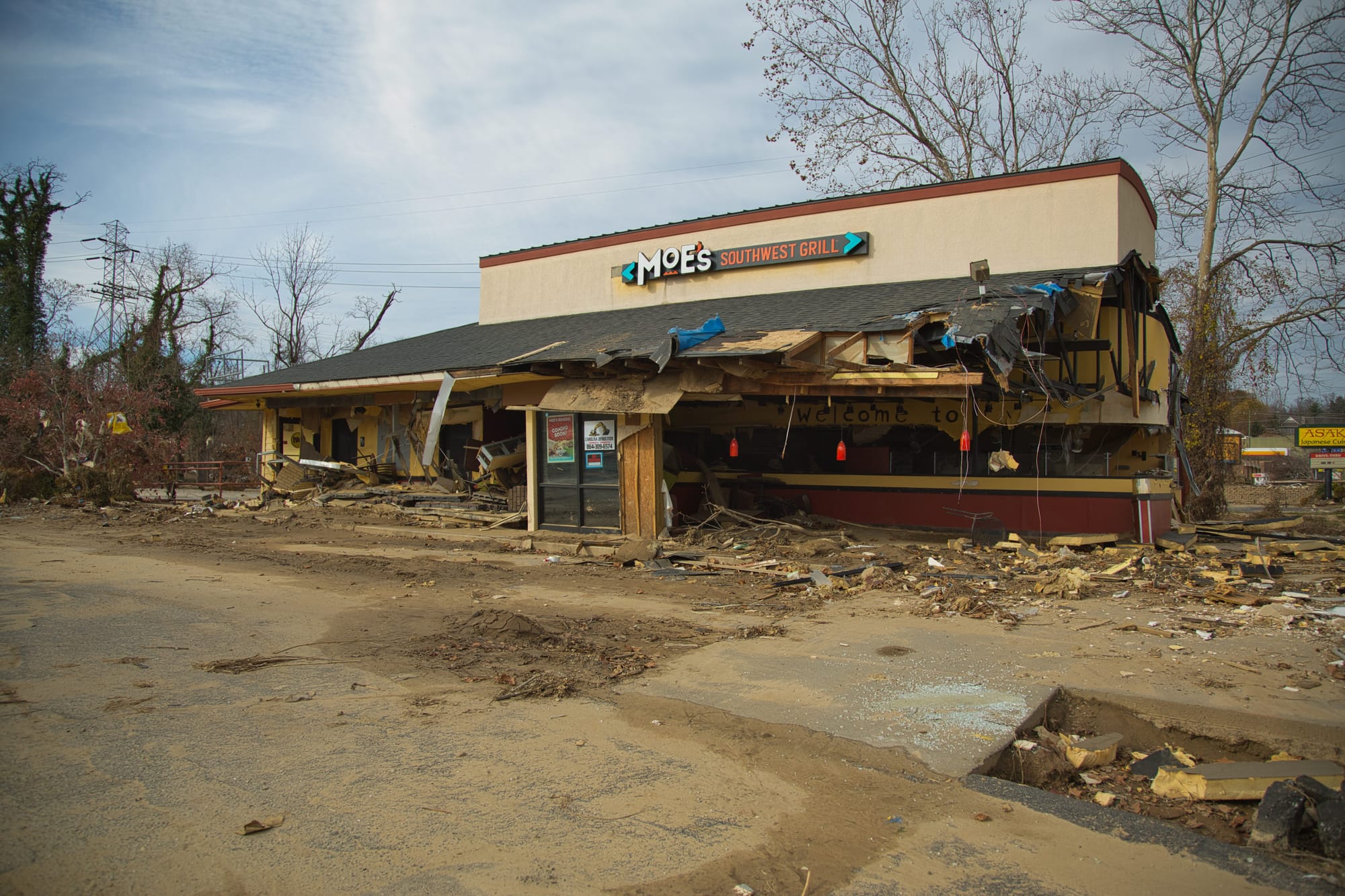
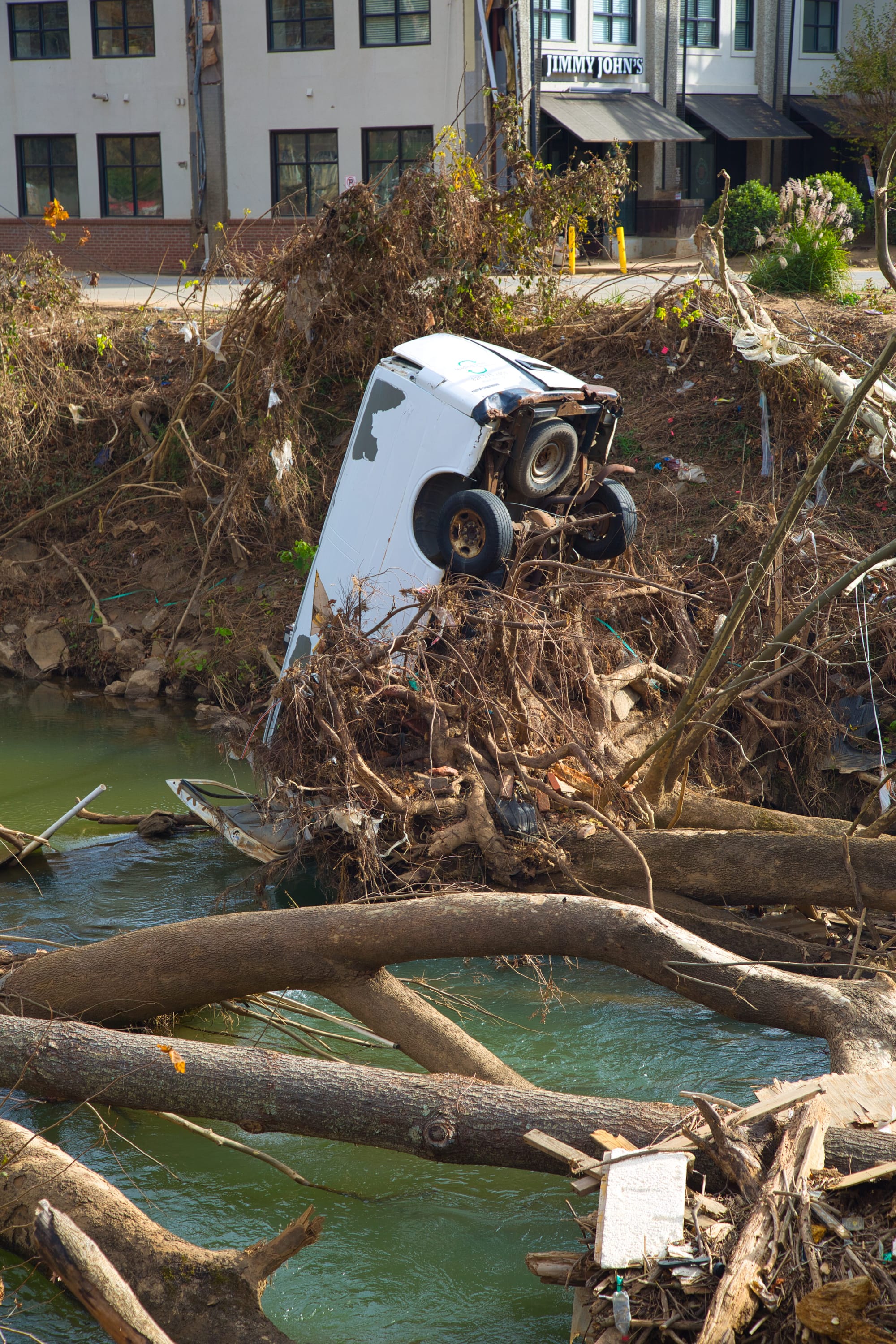


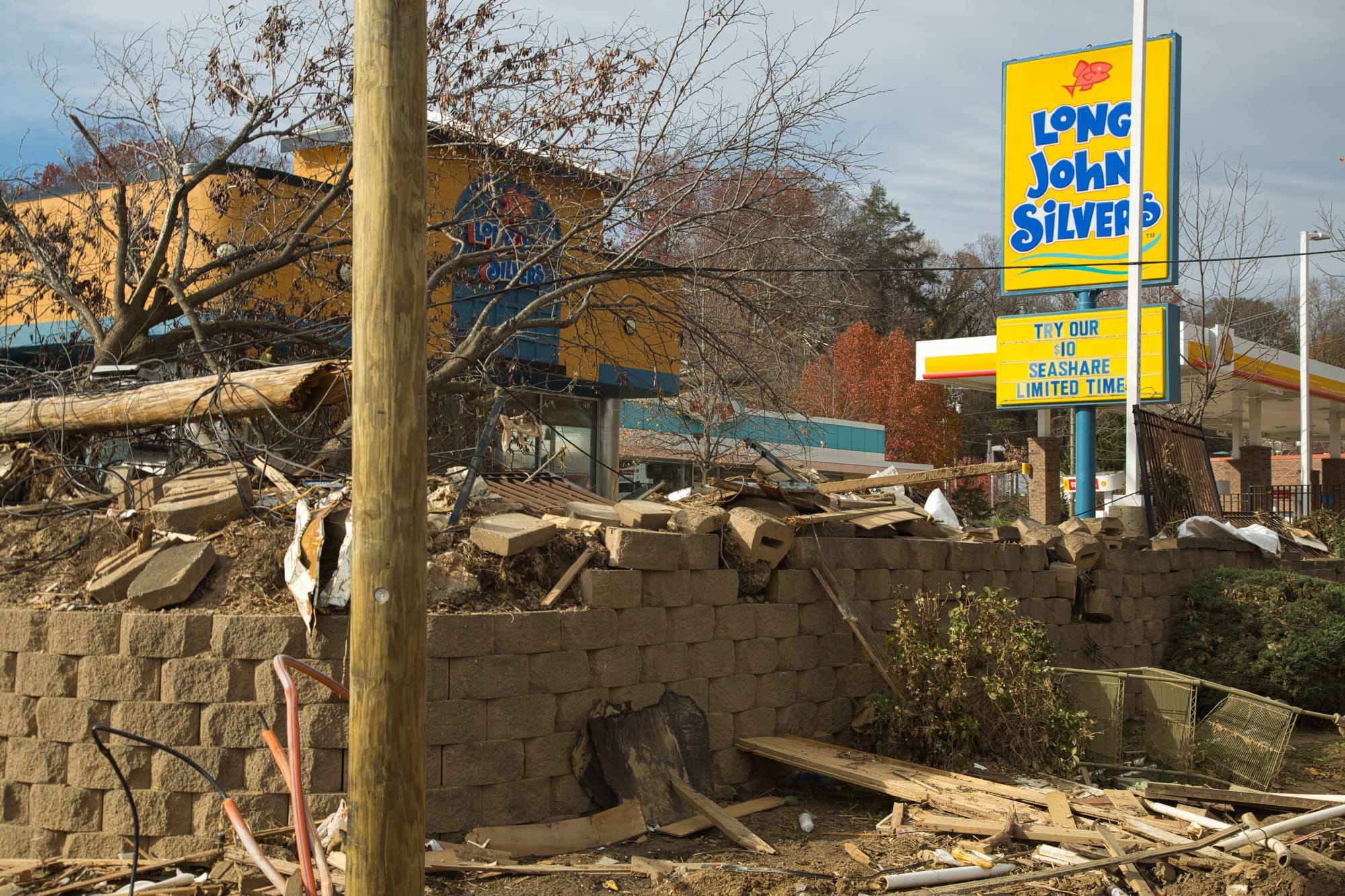
Destroyed buildings and roads near the Biltmore Estate in Asheville North Carolina exactly two months after Hurricane Helene crushed the region.
